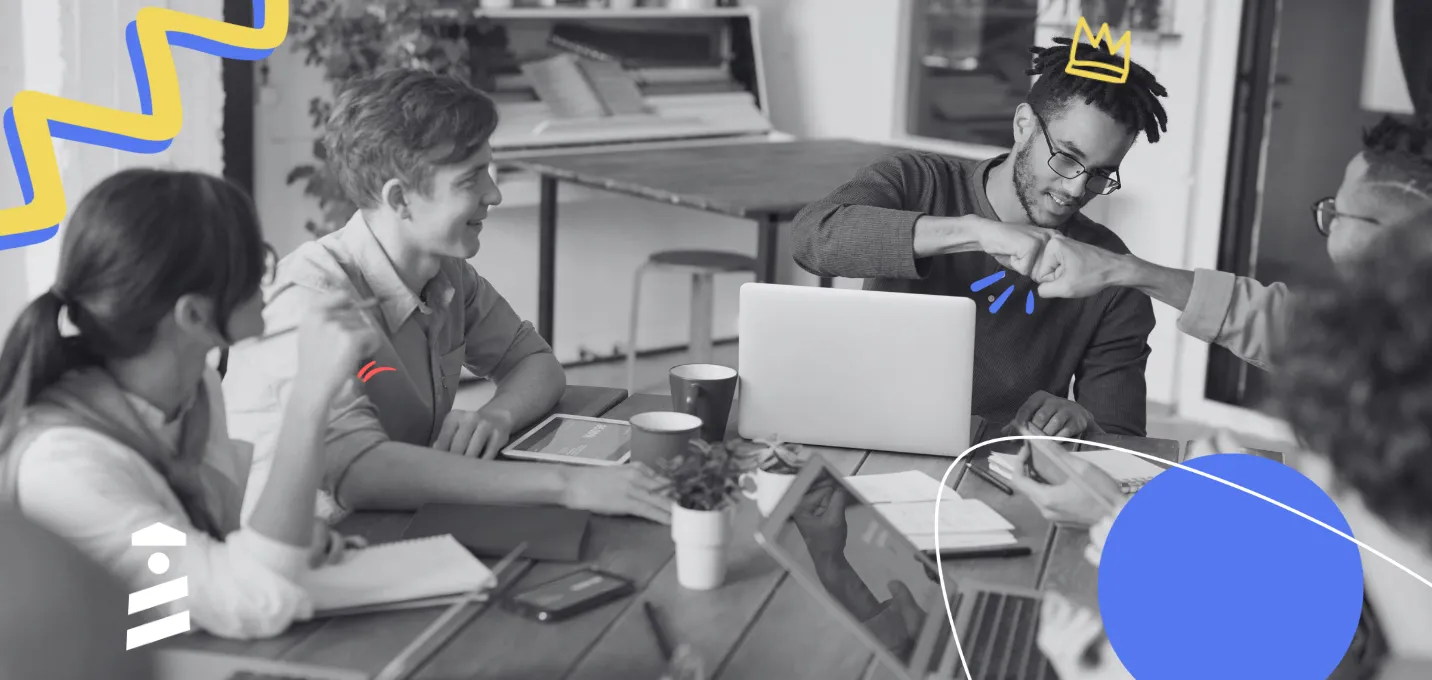

Today, this article will focus on the utilization of gamified experiences in UX, their benefits, top examples of companies with great gamification strategies and it will inform you on the essential steps to gamify your User Experience.
UX Gamification has become the leading philosophy behind many big project plans in that it does significant work creating products that are highly responsive to the audience's needs. The idea itself appeals to the users because to encounter a ''fun'' element in the experience and thus, to understand and follow the process easier, is every user's dream.
And now, it's high time for you to understand and practice this method to boost your user engagement.
Let's get to it.
What is Gamification in UX?

Gamification in UX transforms the user’s interaction with a product into a memorable experience full of rewards, adventures, exciting challenges, quizzes, and the satisfaction of the victory. Gamification increases engagement by adding gaming elements into non-game products like a website, online community, or a learning management system. It aims to make UX fun, interesting and engaging just like a game. Generally, it consists of animations and illustrations as well as many other things.
Today's users are very fond of games, and they are always eager to see gaming elements through their first encounter and the following experience with a product.
The method also empowers UX and product designers to create an engaging, encouraging, and interactive service that won't be quickly forgotten or unnoticed.
In case you're not on board with the idea yet, here are more UX Gamification benefits that will blow your mind.
What are the benefits of UX Gamification?

1- It boosts engagement.
One of the most impactful benefits of Gamification in UX is its capability to increase user engagement. Gamification does a great job attracting new users as well as keeping existing ones by making them stay actively engaged.
Why is user engagement so important?
Well, user engagement for apps, products, or services is vital because it is directly connected to overall income and profitability. It's naturally more possible for highly engaged users to come back to your app and spread the word about it. Thus, the right user engagement strategies can result in a reduced churn rate, increased user activeness, and more time spent by them on your platform.
By gamifying your UX, you can encourage your target audience to perform certain behaviors and complete the user journey successfully.
Here's an example for you:

This is The Nike Run Club, developed by Apple.
The mobile app includes gamification elements to boost engagement and maximize conversions. It helps users handle their motivation problems with the help of gamification; it provides GPS tracking, in-detail workouts that come with guides, progress bars, rewards, streaks, personalized coaching plans, a running log, and even the opportunity to take on fun challenges with friends.
What does Nike get in return?
It was stated earlier in 2020 that Nike Run Club drove retention by 21% and became the #1 running app worldwide.
So, it gets what it aims for in return.
You better be taking notes. 😎
Let's move on to the next one.
2- It evokes motivation.
Are you familiar with that feeling when you're just about to reach the new level of your favorite game and you fail?
Well, what do you do next?
Most people postpone sleeping in order to reach that new level and see what's next. It's only normal for people to try hard for something repeatedly until they get there. The reason for this is the basic human urge to achieve a certain goal, the curiosity, and the motivation that drives them.
What gamification elements do for your users has a lot to do with these feelings and mindsets. UX Gamification gives users a sense of achievement, progress, purpose, and self-improvement while encouraging positive reinforcement. In other words, it motivates them.
How does it do it?
By rewarding the users, giving points after completing a particular task/game, or simply encouraging them to go further & try harder.
This effect can also be examined in psychological terms.
Neurotransmitters such as dopamine, oxytocin, serotonin, and endorphins come onboard when going through gamified experiences. Mainly, people are driven by these motivators with the help of gamification elements such as points, streaks, milestones, incentive notifications, and rewards.
You'll see further information about this advantage of UX Gamification once you're reading the examples below.
3- It encourages competition.
I work better when my friends are involved. Recently I became a part of Duolingo and added most of my friends to compete with them.
The results turned out to be very surprising.
Turns out, I embarked on a very competitive state of mind reflexively and made it useful for my language learning.
How did this happen? What made it happen?
The reason behind this achievement is the productivity, creativity, and attention that comes with competing with others.
Elements such as leaderboards, high score tracking, streaks, and the words '' you passed X'' or ''Y passed you'' are the key motivators that encourage users to compete and achieve more through a gamified experience.
4- It's the special ingredient to great UX.
Making your users experience fun and motivation through your product is a powerful way to boost customer retention, achieve great UX, and increase customer lifetime value.
It might be inconvenient to turn your existing process into a game from scratch, but even including a few gamification elements like rewards and points can make an immense difference in your UX.
Here are other stats that highlight the importance of gamification in UX:
Recent studies found that game-based motivation enhances user engagement by 48%.
The conversion rates of web apps/products with interactive content are nearly six times higher than those that lack it.
Gamification can increase company productivity by up to 50%.
With the help of badges and points, Verizon Wireless increased the browsing time of visitors by 30%.
Top Examples of UX Gamification
1- Duolingo

Back when I was in school, I can't say I enjoyed those foreign language lessons that bored me to death. But Duolingo today helps many people who are just like me.
Duolingo has over 500 million total users and around 40 million of them are monthly active ones. What are the reasons that make the app so wildly popular?
Duolingo mastered the use of UX gamification methods to keep its users engaged and focused as they learn a new language and practice their speaking skills.
What does it have to offer?
As you get started with Duolingo, you get to choose a difficulty level. The levels start with ''casual''. In which the user needs to be active five minutes per day, and ends with ''insane'' which requires 20 minutes of practice each day.
Users can unlock rewards as they keep achieving tasks and reach a streak when they're active for three days in a row.
They can also use lingots if they accidentally skip a day and wish to keep their streak anyway.
This is how Duolingo meets our need for motivation and reinforcement; it makes us feel better about ourselves and gives that sense of satisfaction after completing a task for the day.
2- Strava
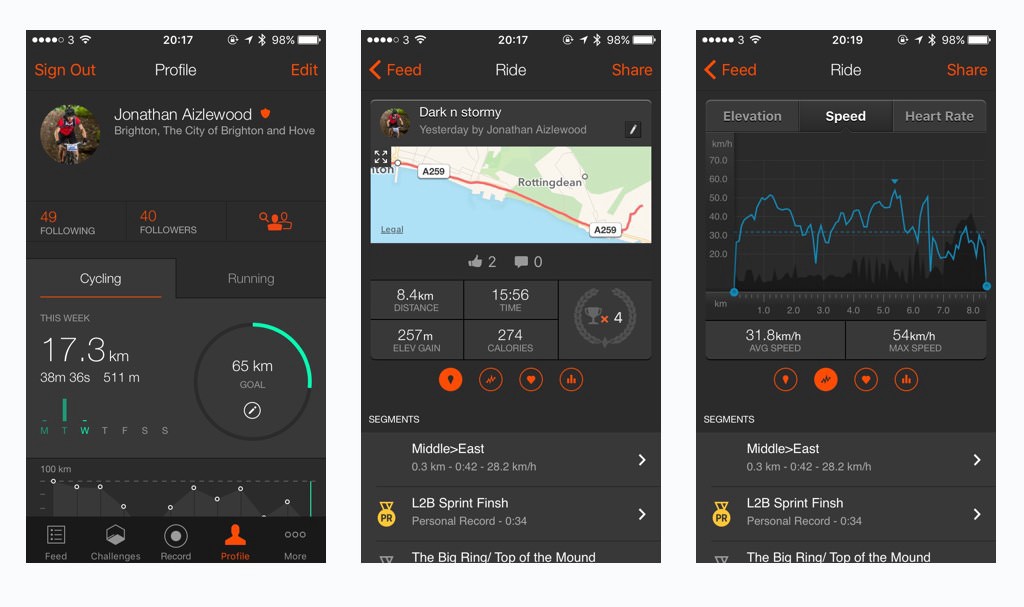
Strava is a fitness app that's used by many of the world’s professional and amateur athletes to keep track of all kinds of physical effort such as runs, bike rides, swims, and various outdoor activities.
Strava uses GPS, heart rate, and other indicators on your mobile or wearable device.
Okay, that's great, but what exactly distinguishes the app?
Strava can offer the motivation that most of its competitors cannot.
Now I can hear you ask the golden question ''How?''
Strava uses gamification elements to motivate its users and gain their loyalty and positive feedback for the long term.
There are many monthly challenges that users can sign up for in the app. Once a user accepts to join a challenge, Strava starts tracking their progress along the way, and if they succeed in completing the given challenge, they are rewarded with permanent badges that appear in their profile. Sometimes, the prizes can even get physical; users are likely to win a pair of sneakers every once in a while.
Furthermore, the app comes as a social fitness platform in which users can gain followers, follow whoever they like, comment on the posts they wish and communicate with fellow Strava users.
It's safe to say that the app is a dream come true for those who are craving a fitness app that changes lives with the help of gamification features.
3- The Money Saving App: Piggy Goals
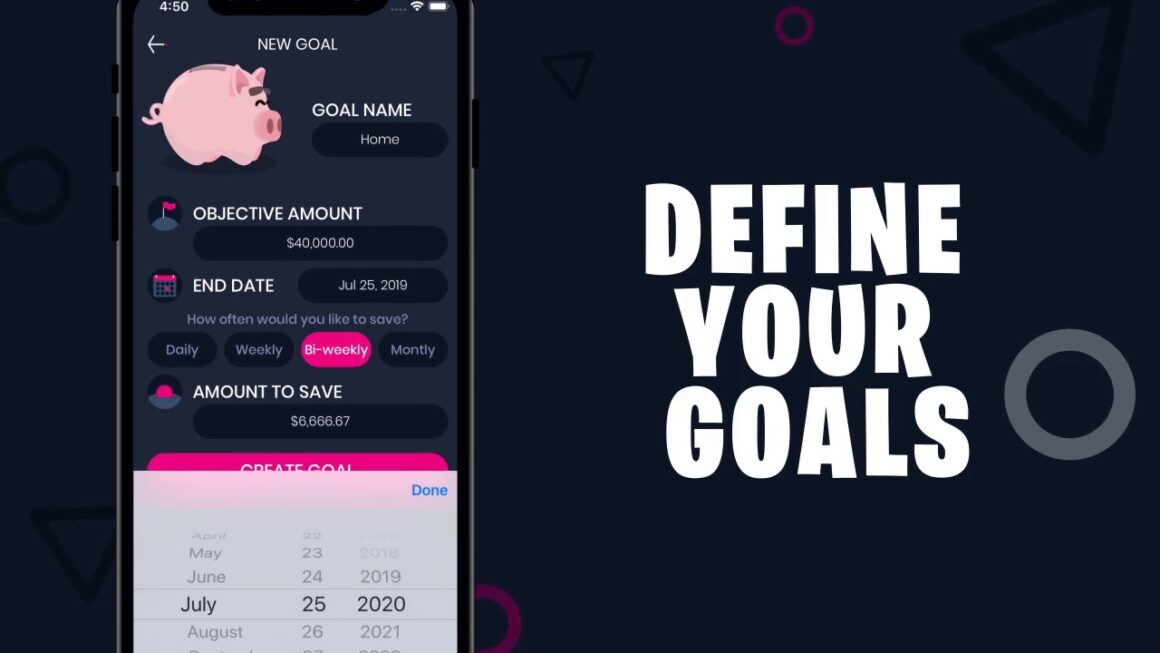
The Piggy Goals app aims to change people's minds about spending too much money. In addition, it brings a new approach to money-saving by gamifying the process itself.
Users can set up a piggy bank to save cash and set daily, weekly, or even monthly goals.
The product tracks its users' journey and sends motivating notifications to make them remember those money-saving goals they set for themselves when they started.
The app provides graphics and animations which give the users a sense of accomplishment through visualization. When people realize how great they're doing, they will be more willing to stay organized and work harder for their financial aims.
4- TaskHero

Whenever I talk to someone to catch up with them once in a while, they're all complaining about not being as productive as they wish to be. They want to achieve more in 24 hours. They want to check more things off their lists.
TaskHero is a great productivity app that helps people become more productive.
TaskHero aims to transform those regular to-do lists into a fun, gamified experience.
When you become a part of TaskHero, you instantly receive a warm welcome to the fictional Tasklandia. Here, you select the essential areas for you; these areas can be school, work, hobbies, or fitness goals.
Enemies -monsters and other threats- are involved in the game. Sounds exciting, right?
Each task users complete creates damage to the enemy, and any overdue tasks harm the users themselves.
The app does a great job encouraging users to track time and be more productive with their lives while having fun in the meantime!
Skip the Dishes

Skip The Dishes is a Canadian online food delivery application. In a world with tons of food orders & delivery apps, it can be challenging to stay alive in the market. And how Skip The Dishes achieves to do this should not come as a surprise. With a solid UX Gamification strategy, the sky is the limit for success.
Here's what I mean:
In addition to browsing the menus of numerous restaurants, ordering the food fast and efficiently, and tracking the delivery progress, Skip The Dishes provides the users with a collection of points that are saved after each order. And users can level up when they've saved enough points.
This method works ideally for Skip The Dishes; the app generates 312 million dollars per year and gains more and more customers as you're reading this!
Now that you've seen examples from different work fields let's look at some tips that will help you gamify your UX.
How to Gamify your UX in 5 Steps
1- Understand what the task is
To create a fresh start, it's completely vital that you fully understand what your task is here. Gamification sure does a lot for you, you've already been reading about it. But sloppy work won't get you where you want to be.
My point is, switching only a few elements to include gamification in your process might not be enough. Your work needs to transform on a deeper level for you to be successful with it.
Don't panic, though.
First, you can begin by identifying a need and setting yourself a particular goal.
For instance, Strava, an example mentioned above, is perfectly aware of its audience's needs. They need to keep track of their psychical activities.
So, what's Strava's goal here?
To help people stay on track and feel motivated while doing so.
I think you got the point. After setting yourself a clear need & objective combination, the next wise thing to do would be to set a relevant mission for your gamification project.
For example, suppose your low user satisfaction ratings result from a lack of comprehension of the product. In that case, the mission of your gamification system could be to teach the user and make sure they fully understand and gain the optimal value out of your service.
To sum up, you need to focus on your gamification system's capabilities and what it could do for you in the long term. Then, take the time to understand and pay attention to the process of creating a solid one that will work both for you and your users.
2- Make your user onboarding/training interactive - like a game!
The second step along the way is just as important as the first one.
As you might -or might not- know, user onboarding is the part where you teach and guide your users through your product/service.
As you can understand from the definition, user onboarding is a learning process for your users. And what is vital for learning processes? One word: Interactivity.
So, as you can imagine, there's absolutely no room here for boring old manuals that take forever to read and understand.
Your users need to feel like they are being taught and guided in a fun way, almost like someone is offering a virtual hand for them to hold on to.
And..why bother?
Because transforming your user onboarding into a delightful experience can be a great way to build a strong first impression, it's always awesome to introduce yourself as a friendly business to the newcomers.
Take it from the game industry, for instance.
It's safe to say that all great video games have at least one thing in common: an interactive tutorial that progressively teaches the user.
Here are a couple of gamification examples from video game tutorials:
- Modern Warfare 2

The game's tutorial level starts a little slow, making the player practice their shooting on an empty field.
But later on, it gives directions as seen on the screenshot above, and creates fun missions for users to help them get the hang of the game; these missions are so fun that most players can't help but play them repeatedly.
The tutorial aims to test some basic skills while slowly but effectively introducing the visual world and the game design that the user is about to step in.
- Far Cry 3: Blood Dragon
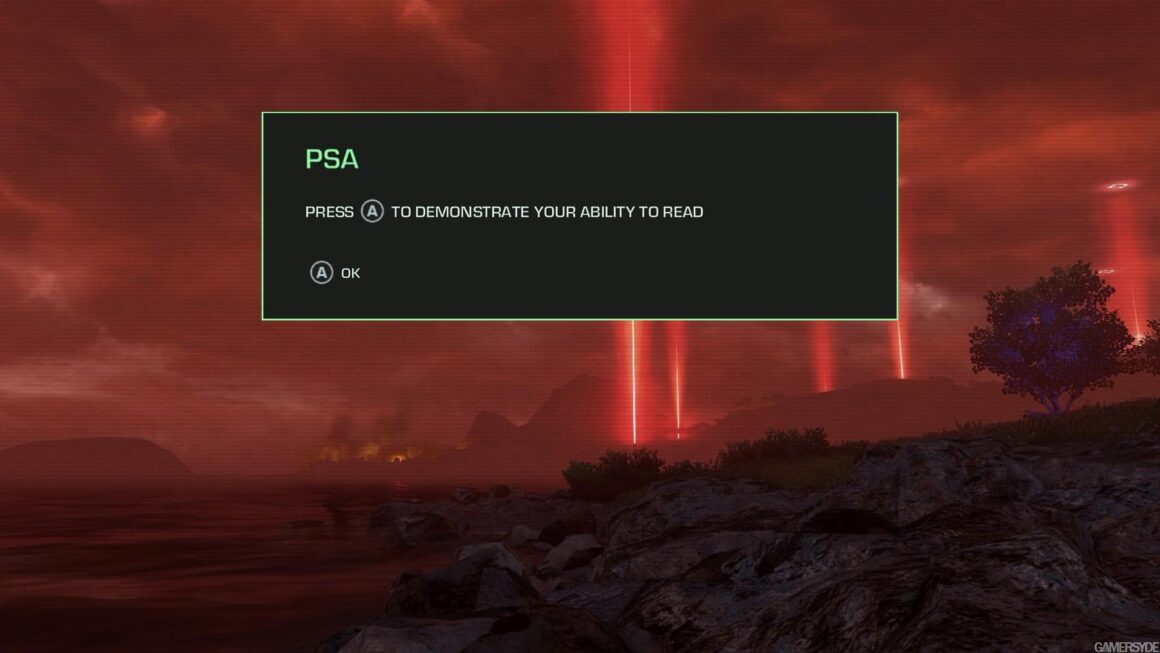
The game's fun introduction attracts attention as soon as the player gets started with Far Cry 3: Blood Dragon.
Instead of the usual boring and rather frustrating directions like ''Look over here, grab this, drop that, do this, do that'', the game includes a sense of humor and does a great job making the learning process fun and engaging while keeping it instructive.
Easiest Way to Gamify User Onboarding 🎮
A 3rd party user onboarding software such as UserGuiding is the easiest and the most affordable way to gamify your user onboarding in a matter of minutes.
With UserGuiding, you can:
✅ Create interactive walkthroughs without coding,
✅ Set up tooltips and hotspots in minutes,
✅ Create in-app checklists to gamify their progression,
✅ And create in-app resource center widgets that offer your users all the help they need.
Using a basic gamification element called an onboarding checklist, the social media management tool Keyhole increased their conversion rates by 550%. Here's what they've done:

You can use UserGuiding to create gamified user onboarding experiences, right now.
3- Time for Gamification Elements
Now that you're done with onboarding your users, it's time to implement the elements of gamification to enrich their journey.
What you're aiming for here is creating small but efficient tasks that need completion by your users.
As long as they have something to strive towards finishing, they'll stay engaged with the process and will be willing to accomplish more. By including points, challenges, competitions, levels, content that can be unlocked, and leaderboards, you'll enable your users to stay competitive and keep track of their processes.
This will make them feel a sense of achievement and will keep them wondering about what comes next.
4- Motivate Through Prizing
Even the most perfectly structured UX Gamification won't work if there are no rewards received at the end. As mentioned earlier, the human brain releases dopamine in the case of victory or prize-winning. And that's precisely why your goal as a UX designer should be providing rewards because it has a lot to do with user engagement.
These rewards could be points, coins, badges, actual rewards - just like in the Nike Run Club example. Or even cute congrats messages that pop up on the screen because who doesn't like being appreciated?
As long as your users feel like they are being rewarded for their efforts after completing the given tasks or finishing the learning process, they will be more willing to dedicate their time & energy to your platform.
5- Keep Up With Changes
After making sure that your users are getting the maximum value out of your product, there's nothing much you can do except for enjoying your success. Or is there?
It's always important to keep in mind that nothing you accomplish will stay fresh the next day, let alone years later. That's why you should keep an eye on the daily evolving technology that's surrounding you, and keep up with the necessary changes that require implementation.
Final Word
By following these steps and paying attention to the last one specifically, you'll be able to satisfy your users and enable them to be a part of a great UX. Good luck!
Frequently Asked Questions
What is gamification in UI?
Gamification in UI exists to engage and motivate. Put simply, it's the use of game mechanics in non-game contexts. These mechanics include avatars, progress bars, points, leaderboards, and badges.
How do I gamify my website/web app?
You can easily gamify your website/web app by including some of the key game mechanics that will work for you. These mechanics can consist of motivators like badges, levels, streaks, or coins. Afterward, you can distribute rewards for your users, keeping them engaged and enabling them to spread the word about your service.
Is Gamification a concept?
Gamification is a concept that's been around for quite some time. It intends to use game elements in non-gaming platforms to boost user engagement and create great UX.
When would you not use gamification?
Suppose you're not familiar with your target audience well enough. In that case, your system requires enhancement, or you're at a stage where you're having problems creating the requirements of gamification, it might not be the greatest idea for you to use gamification.

















.svg)
.svg)
.svg)
.svg)
.svg)

.svg)
.svg)












.svg)
.svg)
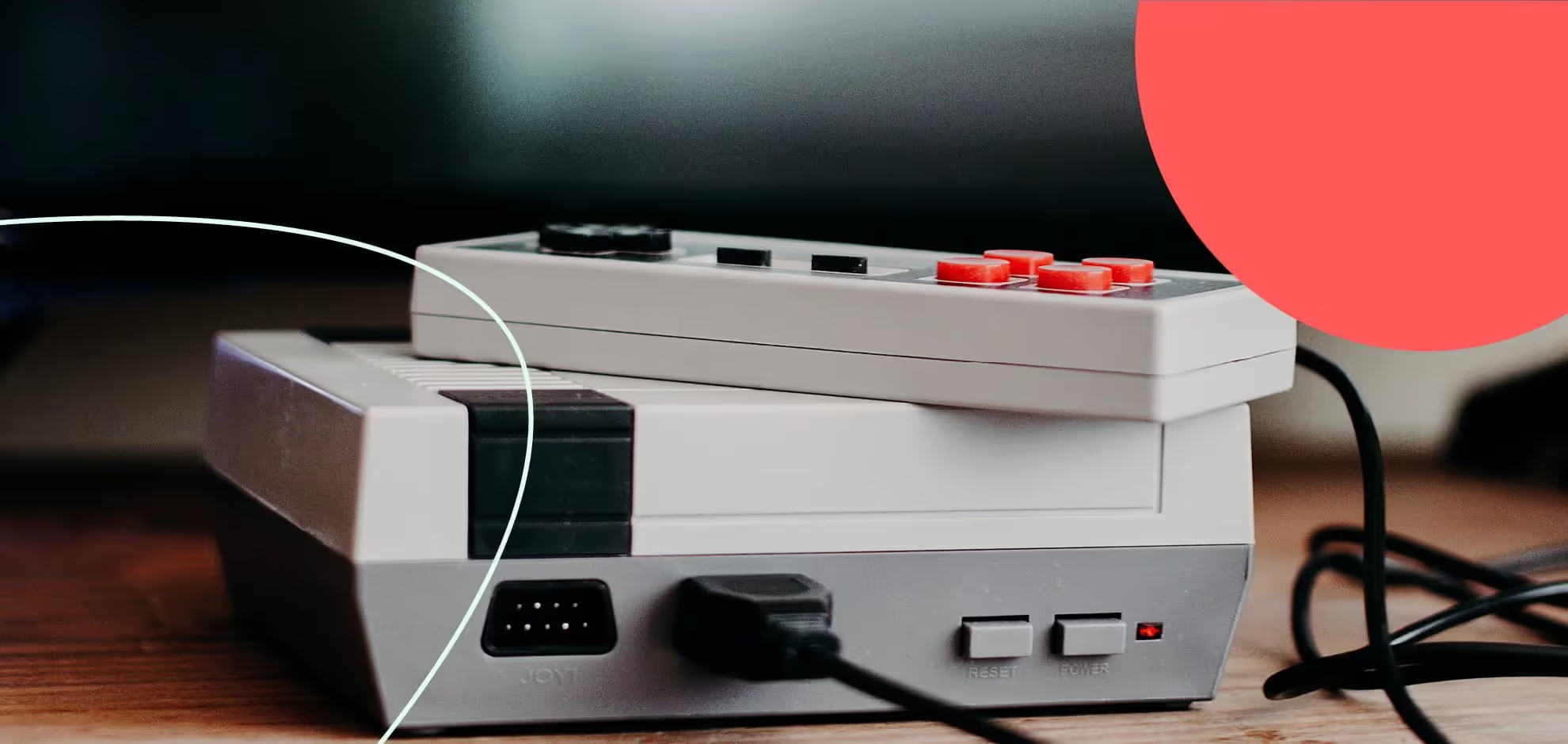



.png)


